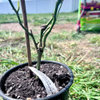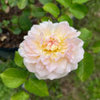The new Vintage newsletter
carla17
15 years ago
Related Stories

KITCHEN DESIGNHouzz Call: Pros, Show Us Your Latest Kitchen!
Tiny, spacious, modern, vintage ... whatever kitchen designs you've worked on lately, we'd like to see
Full Story
DECORATING GUIDESModern Life Makes Room for Blooms
Vintage florals still look lush and lovely on upholstery, curtains, wallpaper and more
Full Story
HOUZZ TOURSMy Houzz: 1921 Portland Bungalow Gone Glam
Vintage cabinets, pastel colors and creative flair outfit a cozy jewelry and mixed-media artist’s home
Full Story
HOLIDAYSHouzz Call: Show Us Your Decorated Holiday Mantel
Share your festive fireplace stylings with the Houzz community in the Comments!
Full Story
LIFETell Us: What Made You Fall for Your Kitchen?
Show the heart of your home some love for Valentine’s Day
Full Story
BATHROOM DESIGNHouzz Call: Have a Beautiful Small Bathroom? We Want to See It!
Corner sinks, floating vanities and tiny shelves — show us how you’ve made the most of a compact bathroom
Full Story
LAUNDRY ROOMSHouzz Call: Show Us Your Wonderfully Efficient Laundry Room
Got a drying rack, a folding table or clever storage in your laundry room? We want to see it!
Full Story
KITCHEN DESIGNPersonal Style: 50 Clever Real-Life Kitchen Design Details
Get ideas from savvy homeowners who have a knack for creating kitchens celebrating personal style
Full Story
FARMHOUSESHouzz Tour: Shaker Simplicity Inspires a Modern Farmhouse
Mixing classic farmhouse style with sustainable features, this Connecticut home is as charming as it is sensible
Full Story
CRAFTSMAN DESIGNKitchen of the Week: Kitchen Returns to the Craftsman Era
Minnesota designers incorporate fine woodwork, Arts and Crafts stenciling, and handmade lights and tiles into their new space
Full Story






barbarag_happy
jerijen
Related Discussions
Vintage Gardens - Pruning Newsletter
Q
New Heritage Rose Foundation Newsletter Available
Q
Vintage Gardens - Benefit Auction for HMF & Oct. Newsletter
Q
New Issue of Missouri Environment & Garden Newsletter.
Q
gymmom411
carla17Original Author
carla17Original Author
jerijen
mendocino_rose
carla17Original Author
jerijen
duchesse_nalabama
hershigrl
jerijen
jaxondel
rozegardener
ingrid_vc so. CA zone 9
jerijen
hershigrl
rozegardener
carla17Original Author
jerijen
pierre
diamondust
annebee
peachiekean
peachiekean
kittymoonbeam
jerijen
phil_schorr
rozegardener
rozegardener
jerijen
carla17Original Author
berndoodle
phil_schorr
susan9santabarbara
kittymoonbeam
jerijen
kittymoonbeam
eko42
lilc5
susan9santabarbara
jerijen
len511
mendocino_rose
jerijen